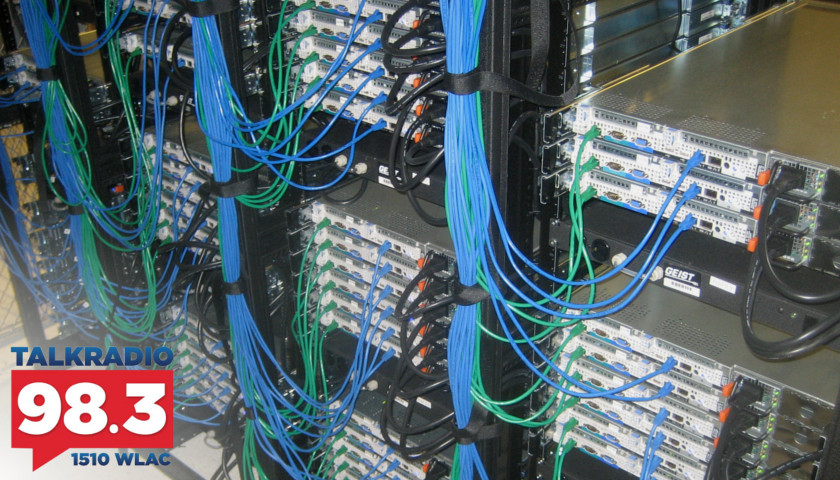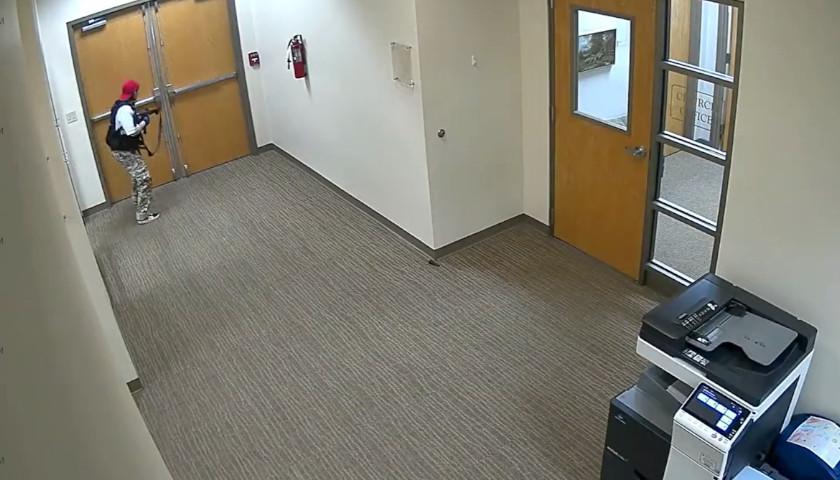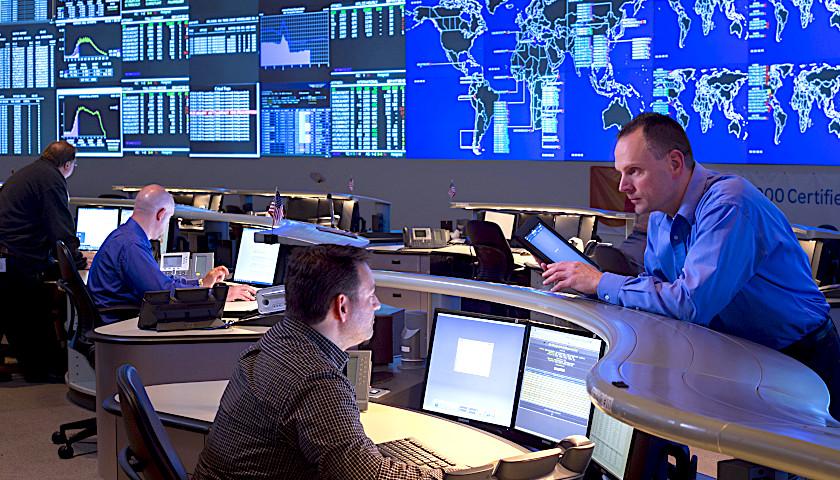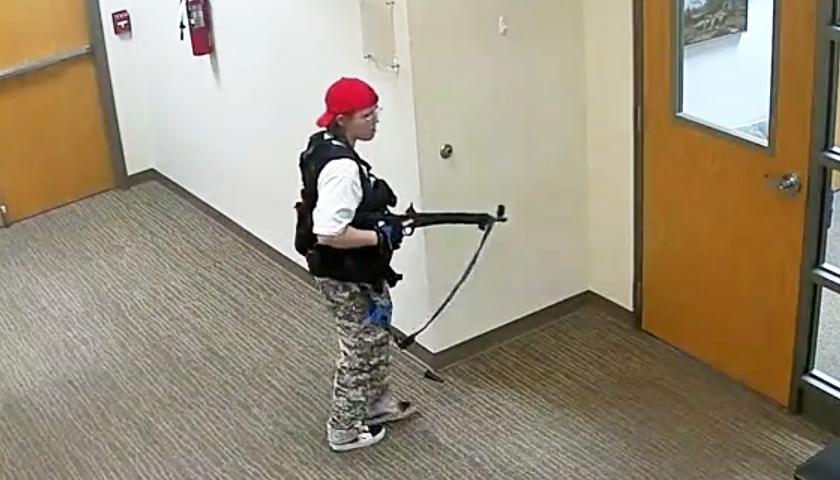Live from Music Row Monday morning on a Special Edition of The Tennessee Star Report with Michael Patrick Leahy – broadcast on Nashville’s Talk Radio 98.3 and 1510 WLAC weekdays from 5:00 a.m. to 8:00 a.m. – host Leahy welcomed Principal Consultant of eComp Consultants, Ivan Zatkovich who specializes in intellectual property consulting for telecommunications to the newsmakers line.
During the second hour, Zatkovich discussed the reasoning for the type of construction of the AT&T building in downtown Nashville and why it is positioned centrally in the city and easily accessible. He added that an important component that appeared to be struck below the street surface of the explosion was the heart of the data center known as the cable vault.
Leahy: Ivan Zatkovich, welcome to the Tennessee star report. Zatkovich is a telecommunications expert with eComp Consultants. Welcome, Ivan. Thanks for joining us today.
Zatkovich: Thank you, Michael. I’m glad to be here.
Leahy: Well, I’m not a telecom guy, but perhaps you can address this issue that I’ve raised here and our listeners I think have raised. How is it that a huge data center for AT&T was located at a place in downtown Nashville where it was vulnerable to an attack like this?
Zatkovich: In general the AT&T transmission building has to be located centrally because it contains all the switching equipment for all the business lines and residential lines to connect to the telephone network. So you have to locate that building where the most traffic is. If you put it outside of the downtown area and a campus surrounded by fences, it would make it very secure but it’s very inefficient for routing telecom from traffic. That’s the main thing.
Leahy: So tell us a little bit about your background and experience with telecom Ivan.
Zatkovich: Sure. I’ve worked for telecom companies including Verizon and GTE. I primarily do consulting work on telecommunications and in e-commerce including serving as an expert witness for patent litigations in the telecom area.
Leahy: So what do you look at something like this the question is is our other data centers around the country vulnerable to these kinds of attacks?
Zatkovich: Yes, they are. I mean they are built in very secure facilities. Primarily the safety concern with these facilities is mainly to protect against natural disasters. So they have things like cable vaults which are literally concrete vaults housing cable and coming into the building to protect against floods and hurricanes. They also have extreme security to prevent unauthorized people from coming into the building and tampering with the equipment. I would say protection against terrorists is not necessarily at the top of the list. But again, they are built to be secure primarily against acts of God for the most part.
Leahy: Now this is AT&T. You’ve worked for a lot of clients. Have you ever worked for them in a consulting capacity at all?
Zatkovich: Yes. I have worked for AT&T both for developing business projects as well as testifying in patent litigation.
Leahy: Now, how does AT&T go about looking at addressing security concerns for this facility in the future?
Zatkovich: That’s an excellent question. The most interesting aspect of this is the van was parked right in front of the AT&T building. The blast went into the building because it was so close to the building. Ironically the most damage was done with the blast entering down into the pavement that blasted a hole into the street and into the infrastructure below which is where all the cabling that comes into that building resides. So in this particular case, I guess one particular option is to extend the cable involved under the infrastructure within the streets to protect vulnerable aspects from the street levels.
Leahy: Ivan, I didn’t know that. So most of the damage was from the downward thrust of the explosion and not upwards?
Zatkovich: Correct. If we look at the holes in the which looks quite devastating that’s not where the critical equipment was. The critical aspect was the cabling that went into the building which comes underneath the street.
Leahy: So it’s directly underneath that the street.
Zatkovich: Correct.
Leahy: Interesting, interesting. I know we got started a little bit late. Can you hold through the break Ivan with us?
Zatkovich: Yes.
Leahy: Thank you so much. I really appreciate this very very helpful. I didn’t know any of this.
(Commercial break)
Leahy: We are joined by telecommunications expert Ivan Zatkovich who is the principal consultant with a company called eComp Consultants. He’s consulted with many of the leading telecommunication companies in the country. And Ivan just told me what I did not know which is that the majority of the damage of this blast on Christmas Day in downtown Nashville in front of the AT&T transmission center came from the downward thrust of the explosion. What does that cabling vault below the street there right in front of the AT&T building, what did that look like? What were the levels of protection there?
Zatkovich: If you have ever been inside of a cabling vault, it literally looks like a mausoleum. Thick concrete walls with these pipes coming in holding cables. Now, remember, this is a central location that has all the cables coming from all the local businesses and residential zones as well as all the connections to the cell towers. So it contains the mobile switching center as well as the power coming into the building.
So the two most vulnerable parts of this would be the cable coming into the building which is why it’s located underground in a vault and the electrical equipment that does the switching which would not be at street level. It would be above street level. So in this particular case, the vulnerability was the blast into the street of the cables coming into that cable vault. I would venture that the cable vault survived with much less damage than the street itself. So that was the vulnerable aspect of this.
Leahy: Interesting. Now that the risk assessment people at AT&T I guess were aware of this possibility did they prepare sufficiently for this ridiculously unexpected possibility?
Zatkovich: I can’t imagine that you can protect against all scenarios. And again the fact that we have these huge thick secure cable vaults speaks to the fact that liability is the most significant aspect of this planning. But I don’t think it’s possible to plan for every aspect such as huge explosions. And again, I believe that internally to the AT&T transmission building, the damage was much less than visible from the outside. And again, I think the most vulnerable aspect of this was the cables coming into the building as opposed to in the building itself. So protecting the infrastructure outside the building would be of a different concern and a different planning operation.
Leahy: Yeah, exactly. So if AT&T were to call you and ask for your advice now on how to plan going forward, What would be the top two or three things you would do? Would you move the facility or keep it and reinforce the cable vaults below?
Zatkovich: And that’s an excellent question. Again, we learn in every aspect, I am sure they’re thinking very strongly about this now. I would consider possibly extending the cable vault into the infrastructure perhaps underneath the streets. Again, there will always be vulnerable points in the network because it’s such a large network. But yes, I would say that would be the most obvious thing to extend the cable vault out into the infrastructure underneath the street.
Leahy: And so moving it to another location. I guess you said it would be somewhat impractical?
Zatkovich: It would be definitely problematic. You would have to re-cable a large percentage of the telecom network infrastructure. It would make for less efficient communications. I am sure that’s an option that that’s considered. The central offices located throughout many different neighborhoods. In fact, they’re generally the one-story plain brick buildings with no windows.
When you see those buildings, you’ll understand that most of the infrastructure is underground. So again, these facilities are designed to be very safe and very protective against mostly natural disasters. But again, I think they’re going to have to take other factors such as terrorism and bombings into account going forward.
Leahy: Now, did you take a look at all at the force of this blast? And what were the materials used to create this blast? They seem to be very very powerful from what we’ve seen.
Zatkovich: We know that today we are capable of doing homemade bombs and using techniques to make very powerful blasts. And we can see the damage. I’m looking at a picture of the outside of the AT&T building now knowing how strong that building was constructed, it was an extremely powerful blast. If the building was located on the other side of the street to the normal old buildings, the damage would have been much more extensive than what we see to the AT&T building.
Leahy: It’s very very interesting. Now on these matters, how many data centers of this size exist in the United States right now? 50, 100, 200?
Zatkovich: Every metropolitan area such as Memphis has a transmission building like this. So we’re talking thousands of facilities like this throughout the United States.
Leahy: Interesting. Interesting. Who would be the person at AT&T who’s making these decisions about how to deal with it? Is there a VP of risk assessment? Or what’s the level of decision making and how do they interact with local federal and state officials in making these decisions?
Zatkovich: It’s definitely a group effort. Within telephone companies, there are multiple departments getting together. But the VP of Information Technology would be one. We have safety & security department’s working on this. So I am sure they are having non-stop meetings today as we speak. First to determine how to recover from this particular disaster. And they apparently have been doing a very good job on that to make sure how to plan for a future event like this.
Leahy: It strikes me that the recovery from the outages that happened at the time of the bombing was at 6:30 am Friday and now here we are, you know 7 am on Monday. And from what I can tell we’ve got about 80-85 percent of capabilities restored. That seems to me to be a remarkably fast recovery period of time. If these cable vaults have been damaged so severely in the blast how have they accomplished that?
Zatkovich: Well, there’s redundancy within the network. And they set up as you probably know they set up temporary mobile towers and they are probably rerouting a lot of the traffic into other access points into the building. Because this blast was only in one spot of the building and again, there would be multiple cable accesses to that building. So they’re probably rerouting a lot of the traffic.
Leahy: There are some reports that the perpetrator who is now-dead is apparently a suicide bomber. His remains and DNA have identified him as Anthony Quinn Warner. There are some reports that he was ‘paranoid about 5G technology.’ Are you familiar with those concerns? Did this particular facility have any particular connection to 5G technology?
Zatkovich: Yeah, I was aware of that particular rumor about the 5G network. The transmission building would have held as I mentioned before the mobile switching center which would have. And I’m sure they’re starting to migrate that to the 5G network. So there were probably aspects of the mobile switching center that were operating and integrating with the 5G network. So if that was his intent I’m sure he had some idea in mind of attacking the mobile switching center for that purpose.
Leahy: So briefly if you can explain we got about two minutes left here either and thanks so much for being available to talk about this. It’s very helpful. What’s the difference between the 5G technology and the current technology that’s being used in telecommunications?
Zatkovich: Well a true 5G network has multiple aspects to it. There are things called metro cells and microcells where a tower will cover a much wider area because it’s a much higher frequency and it’s much more ubiquitous in terms of being able to plug into mobile networks and other internet connections and routing traffic to many different hubs throughout the country. It’s much more flexible and much more high speed and a much wider range than normal 5G or 3G networks that we’re used to.
Leahy: Are there concerns about the misuse of 5G technologies at all out there?
Zatkovich: Again, there are concerns from China and Huawei implementing back doors into the 5G networks. That’s a possibility. Of course, there are rumors that there are different ways of transmitting control technology to control perhaps people’s minds or spread COVID. Naturally, these are all unfounded rumors. So yeah as you see new technology coming out you’re going to see just as many rumors about what type of control technologies might be incorporated into that.
Listen to the full second hour here:
– – –
Tune in weekdays from 5:00 – 8:00 a.m. to the Tennessee Star Report with Michael Patrick Leahy on Talk Radio 98.3 FM WLAC 1510. Listen online at iHeart Radio.
Photo “Data Center network” by Midom CC2.0.









[…] Open link […]